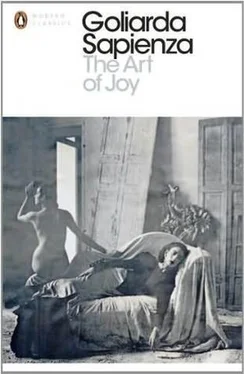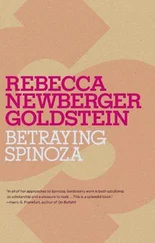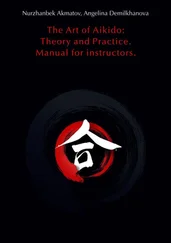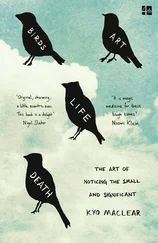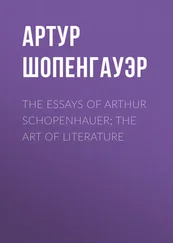Goliarda Sapienza
The Art of Joy
Foreword. The Long Journey of The Art of Joy
If it’s true that every book has a destiny, then I myself certainly played a part in that of The Art of Joy , from the time I met Goliarda in 1975 through the editing of the novel that Goliarda delegated entirely to me. Her sudden death in 1996 subsequently bound me inextricably to that destiny since at that point, the responsibility of letting Modesta’s story — completed years earlier in 1976 — live or die was mine alone. Repeatedly rejected by major publishers in its day, the manuscript lay for decades in a chest in my office, awaiting more fortunate times. Those times never came. Until Goliarda died.
Then I had a thousand copies of The Art of Joy published at my own expense under the imprint of Stampa Alternativa. The year was 1998. Copies were sent to a number of critics and writers. The book was passed over in silence. I remember going each day to a Feltrinelli bookstore which kept two copies of the novel behind some other volumes high on a shelf hidden behind a column. Each time I asked myself: who on earth is going to buy it? One day I noticed that one of the copies was missing. I don’t know what I would have given to know the identity of that one lone buyer. After a time the other copy disappeared as well. It was astounding.
Three years went by and nothing more happened. Then, thanks to the enthusiastic interest of Loredana Rotondo, director of Rai Tre, a programme about Goliarda was created as part of the series Vuoti di memoria ( Memory Lapses ). Entitled ‘Goliarda Sapienza, the Art of Living’, it was a melancholy but evocative production full of numerous testimonials, including mine. It was aired more than once, a rare occurrence, though scheduled at times that as usual were impractical.
The show was not in vain. It served to arouse the interest of the all-powerful distributors, ever sensitive to media support, who pushed the publisher Stampa Alternativa for a more sizeable reprint, which came out in 2003. This time a certain interest began to develop, more to do with morality issues than those of a strictly literary nature; this has always been the case with the critical fortunes of Goliarda’s work.
* * *
Outside of Italy, The Art of Joy enjoyed a decidedly better fate. When the 1998 edition came out, I gave the novel to a young literary agent who dealt with German-speaking countries. She aroused the interest of Waltraud Schwarze in Frankfurt, who had a resourceful way of discovering little-known texts. The book thus came to be published in Berlin by Aufbau-Verlag. Or at least the first part came out: in Germany the volume was divided into two parts. But Waltraud Schwarze had meanwhile telephoned Viviane Hamy in Paris, an apprentice at Robert Laffont, a publisher known to be daring, recommending that she read a novel paru en Italie en 1998 dans une petite maison d’édition que personne ne connaît. Le texte est un peu bizarre, il fait 600 pages. Il va coûter une fortune en traduction, il y a peu de chance pour qu’il y ait plus de personnes qui le lise à l’étranger qu’en Italie, mais c’est vraiment merveilleux. That is, the text is a bit unusual, and it’s 600 pages. It will cost a fortune to translate, but it is really marvellous .
Hamy immediately sent the novel to her translator, Nathalie Castagné, she too a novelist, who called her five days later, both excited and anxious. The excitement was the result of reading the book; the anxiety came from a fear that, on the one hand, Viviane Hamy might decide not to have the novel translated, while on the other hand, if she agreed to do so, she, Hamy, might become responsible for the publisher’s ruin.
That was how the successful coup of The Art of Joy in France came about, through the group effort of three extraordinary women, unconcerned about competition and ready to roll up their sleeves. The critics did the rest, and did it well. All I can do, as an Italian writer, is point out an interesting phenomenon I observed from my reading of the immense body of press clippings: in France, critics actually read the books they review. Maybe only when they seem like good books, but then they read them all the way through.
Today The Art of Joy has appeared in translation in many countries of the world. When the prospect of publishing her book in its entirety arose in the spring of 1996, Goliarda, preparing to revise The Art of Joy twenty years after she had completed it, set in front of her a reminder of sorts with the following words: ‘Thirty years have passed since the first notes about Modesta. Careful, Goliarda, don’t fall into the trap of self-censorship!’ She was afraid that two decades of rejection by the publishing world, and three decades of living with her novel’s protagonist, might have blunted the force of the original idea; she worried about slipping into the sin of censoring herself, the most serious lapse for a writer like her. She feared being shamed and embarrassed by the most idiotic form of betrayal, her own story.
Anyone in her place would have had good reason to doubt herself. The two greatest Italian critics of the time had expressed judgements along those lines. The first: ‘It’s a pile of iniquity. As long as I live I will not allow the publication of such a book.’ The second, a more elegant free spirit, and a rather close friend of Goliarda, had once answered the phone with some irritation: ‘What does that kind of work have to do with me?!’
* * *
The Art of Joy must be cursed: because of it Goliarda was reduced to absolute poverty, and even ended up going to jail. She had begun writing it the year after those first notes, that is, in 1967. She had already completed Lettera aperta ( Open Letter ), scheduled to be released that year, and Il filo di mezzogiorno ( The Meridian Hour ), which would come out two years later. They are the first two novels of a series of five autobiographical works which Goliarda interrupted for nine years, literally possessed by the urge to give life to her character, Modesta. (Such irony in that name: ‘Modesty’!)
She usually wrote in the morning, starting around nine-thirty and continuing on until one-thirty or two o’clock. She wrote every day, trying to avoid — though it wasn’t easy — the numerous invitations to lunch outdoors in Rome’s sunshine during those blissful, excited years. She always said that writing meant stealing time away even from happiness. On Sundays she religiously rested. She smoked a lot, like just about everyone did back then. Her workday often ended with a hot bath. In the late afternoon a much younger friend, Pilù — reddish-brown hair with delicate freckles on her face and big eyeglasses — would ring the doorbell. They smoked and drank together, but most of all Goliarda read her what she had written that morning. I think the regularity of Pilù’s listening ear was critical to the progress of a work that is certainly not a short story, like so many [books] that have qualified as novels for some years now. Pilù listened with interest — not the attention of a professional, but that of a well-read, avid reader. On the other hand, Goliarda sometimes also let Peppino read what she wrote: he was the refined and sensitive, much-loved doorkeeper of the building on Via Denza.
Goliarda and Pilù would carry on like that until evening. Afterwards Goliarda cooked a quick supper. She was an extraordinarily talented cook. She could cook anything, with anything, and above all with the utmost insouciance. She wanted so much for this talent of hers to be recognized. Let them say she was a mediocre writer, fine, but not a bad cook. She seems to have inherited the art from her mother, Maria Giudice, who between peasant uprisings, strikes, rallies and a bevy of children was not above preparing sumptuous little dinners that were even appreciated by Mussolini, who, during a common exile in Switzerland, was still a destitute revolutionary.
Читать дальше
